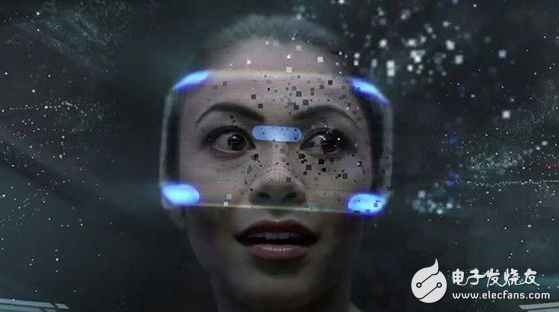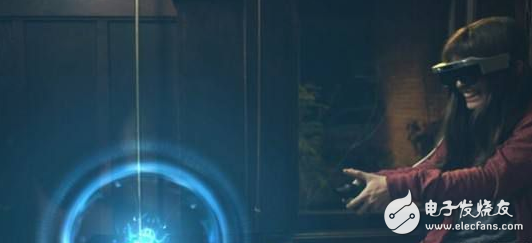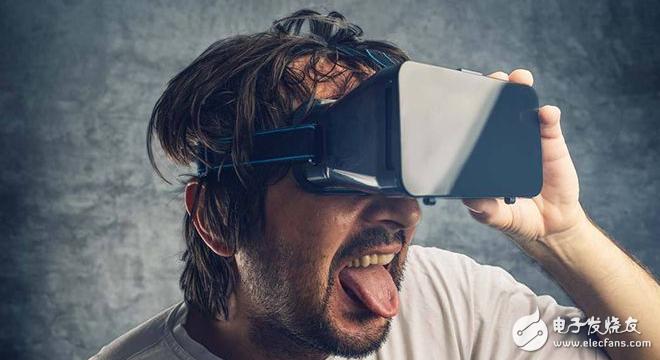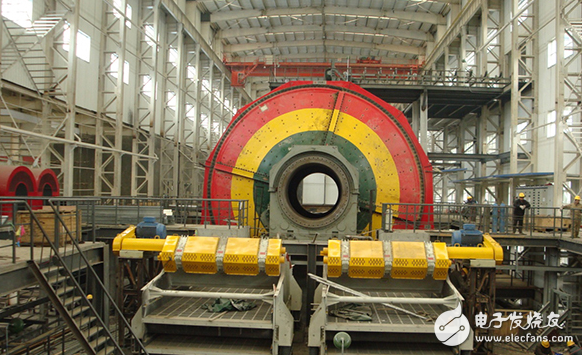VR eyes and VR helmets have begun to be accepted by emerging humans, and somatosensory games have begun to enter our daily lives. With the development of VR (Virtual Reality), more and more eyes are focused on VR. At the same time, more problems are constantly appearing in the hearts of followers. However, the current VR industry is slowing down, and there are some hidden concerns about whether virtual reality can be realized. Although many giants are actively participating in the layout, the actual results are not satisfactory.
Some foreign media said that today's virtual reality has entered a low tide, and the market environment is not optimistic. According to a report released by market research firm CCS Insight in February this year, sales of virtual reality hardware devices were 40% lower than expected. Not only that, the large number of virtual reality devices sold are relatively inexpensive and convenient glasses products that can be experienced by consumers through smartphones. The higher-end special-made virtual reality helmets have a poor sales volume, which is the economic reality of the companies that present virtual reality content.
The pessimistic sales have slowed down the pace of research and development of virtual reality devices. Some scholars have said that nearly 80% of virtual reality enterprises will die, but the reality is not so bad: March 2017, more sensitive and convenient CaptoGlove Wireless VR wearable gloves are on-line crowdfunding; in April, "Unity" completes the combination of VR and smell... This contrast can't help but start to reflect, how long can we really achieve "virtual reality"?
The current virtual reality technology is obviously flawed
Virtual reality involves four links: the generation and presentation of virtual content, the perception and interaction of the virtual environment and the real environment, and the computing facilities that support the operation of the virtual environment. At present, public opinion focuses on a large number of head-mounted display devices, focusing on the second link, that is, the presentation of virtual content.
In terms of content presentation of virtual reality, the defects are too obvious in the current technology.
First, virtual reality devices are expensive. Cheap VR devices do not give users a good virtual reality experience, and often suffer from poor resolution and heavy equipment. Not only that, if you want a better quality gaming experience, users need to buy peripheral equipment and a computer with superior performance. These virtual reality peripherals cost from 3,000 to 10,000 yuan, and ordinary families may find it difficult to entertain. And bear this expenditure.
Second, the technology still has problems, and the device cannot fully present the real world. VR devices require higher image quality. In general, our movie image is 24 frames per second, and VR devices need to achieve more than 100 inches per second to achieve high image quality. This greatly increases the computational burden of the hardware, and it is still difficult to fully implement it in the industry.
Third, the various devices are worn together, causing the user not to be completely immersed. Perceived virtual touch must wear VR gloves; VR glasses or helmets must be worn to perceive virtual scenes; specific scenes need to be placed on specific machines; perceived temperature must be worn on body sensations... Combine these devices in one device The bulkiness makes it difficult for users to immerse themselves in a virtual reality environment.
Fourth, quality content is scarce. Every virtual reality enterprise is vying to be the leader of the industry. Video websites such as Storm Video and Iqiyi have launched their own virtual reality programs and APPs early, but the VR programs of various enterprises are not interoperable. Only one company has a certain enterprise. VR devices can watch the VR content of this company. The content is not interoperable and the production is difficult, and the lack of quality content is unexpected.
Fifth, there is no industry uniform adaptation standard between devices. The adaptation between devices is not uniform, which means that when you buy VR glasses that cannot adapt to a VR peripheral device, you can't experience more virtual reality content. For example, Samsung Gear VR devices can only support Samsung Note. 4 and other specific models of mobile phones, while Sony's Project Morpheus is the main game area, currently only supports PS4 game consoles and so on. Compared with the PC-based helmet with high R&D threshold and relatively mature development, the standard confusing phenomenon is more obvious in the mobile VR hardware market with lower cost and lower threshold. Therefore, uniform adaptation standards between industries need to be formulated.
Before the implementation of virtual reality, Augmented Reality needs to be paved
Faced with the current disappointing situation of virtual reality, many people turned their attention to augmented reality. Augmented reality is the application of virtual information to the real environment through computer technology, so that the real world and virtual information exist at the same time, true and false.
In 2016, the augmented reality game Pokemon Go, which can be played on smartphones, is popular all over the world. Microsoft also launched its high-end augmented reality helmet HoloLens. At the beginning of 2017, the Yin and Yang Masters Tour opened the AR Call of the World. In the Spring Festival of 2017, Alipay launched the game of “AR Real Red Packetâ€.
Virtual reality relies heavily on hardware, while augmented reality emphasizes software, and most users can experience augmented reality through existing mobile phones. ABI expects that Augmented Reality will surpass virtual reality in 2019.
Just as from the big brother to the popularity of smart phones, the development of technology has never been done overnight. A mature product must be accompanied by a new generation. Therefore, before the arrival of the real virtual reality world, augmented reality needs to be paved.
It takes at least 20 years from technical specifications to ethical standards.
From the emergence of the concept of virtual reality, ethical issues have been receiving much attention. What about privacy leaks in a virtual reality environment? Will people have psychological problems after they leave the virtual reality environment? What effect will it have on the psychology of the real world? What impact does virtual reality have on children? It is a topic of concern to people. Virtual reality technology is not a one-time process, and so is ethical norms. Technology and systems should be accompanied by mutual development.
The world-renowned consumer-grade computer graphics card manufacturer Nvidia CEO Huang Renxun said that his company wants to suspend some VR projects because he believes that the current VR still has some application defects such as low resolution of the device, too heavy VR equipment and some ethics. The problem, and these defects will take at least 20 years to fully resolve.
Although this technology is still immature, virtual reality is indeed an inevitable outcome of the development of the human Internet to a certain period of time. We still have confidence and hope that in the future, human beings can truly realize virtual reality and use it for me!
VR penetrates into the industrial sector
The popularity of virtual reality in 2016 is undoubtedly the most eye-catching technology phenomenon. Now many fields are seeking to combine with VR to gain more development space. Nowadays, due to the sluggish economy and the de-capacity of the supply-side reform, China's industry is also facing transformation and upgrading. The simulation application and visualization function of VR technology will enable the industrial industry to gain new opportunities and new development in the information age.
Nowadays, VR technology is becoming more and more widely used in the industrial field. For example, in the automotive industry, VR technology has been applied in design, component manufacturing, assembly and sales. Especially in the design, manufacturers can use VR technology to get a 1:1 simulation effect, to make the abstract concept in the design concrete.
And the research and teaching related to the industry is also being changed by the arrival of VR technology. At present, many colleges and universities are actively studying virtual reality technology and applications, and have successively established research studios for virtual reality and system simulation, which quickly transform scientific research results into practical technologies.
At present, most domestic industrial product designs use tools such as 3DMAX. Although there are 3D effects, they are still designed on the plane, which seriously restricts the designer's imagination and product development efficiency.
The emergence of virtual reality technology can not only make some feasible virtual tests in the early stage of product design, but also use virtual reality to simplify the design operation of products in the product design process, and later use virtual reality to directly simulate various virtual scenes for users. And visual effects, allowing designers to immersively test product effects to better optimize the product experience.
Nowadays, many developed countries have applied VR technology to the field of industrial design. Due to the late start of research on virtual reality technology in China, few companies have applied virtual technology to the industrial field, especially in industrial product design and industrial display.
The virtual reality engine development kit independently developed by Hunan Virtual Reality has been widely embedded in industrial design and manufacturing. It integrates VR technology with industry, realizes process reengineering and individualization, and comprehensively enhances product experience for manufacturing. The R&D, production, management and service sectors have brought about profound changes, further promoting the development of smart factories and helping to transform and upgrade the traditional industrial industries.
The invention of the steam engine allowed humans to enter the industrial society. The invention of the Internet brought mankind into the information age, and the emergence of virtual reality brought revolutionary changes to human society. The simulation of virtual reality not only reduces the cost of trial and error in all aspects of industrial application, but also realizes parallel teaching research on virtual and real interaction in scientific research and education. Now, besides the entertainment that is closest to life, we should have more experience in VR technology. More understanding and expectation.
Metal Spraying Accessories,Pump Sprayer,Pressure Sprayer,Agriculture Sprayer Parts
Shaoxing Tianlong Tin Materials Co.,Ltd. , https://www.tianlongspray.com
